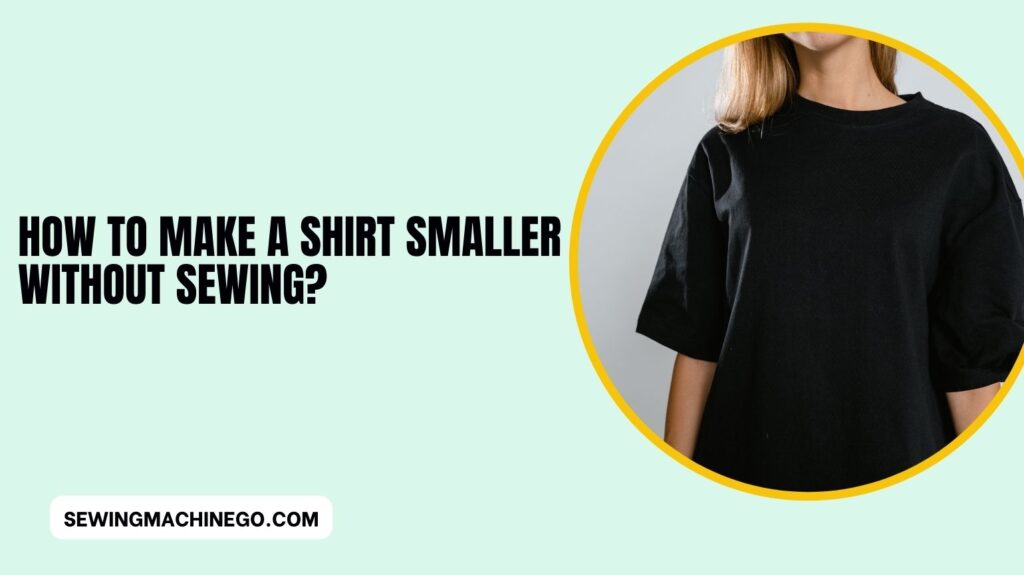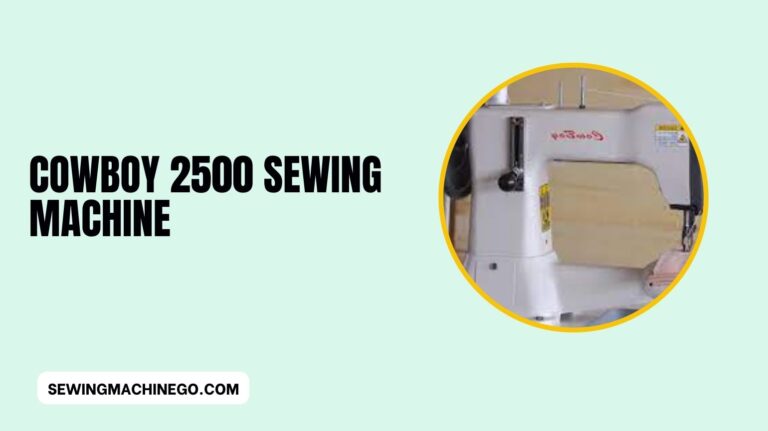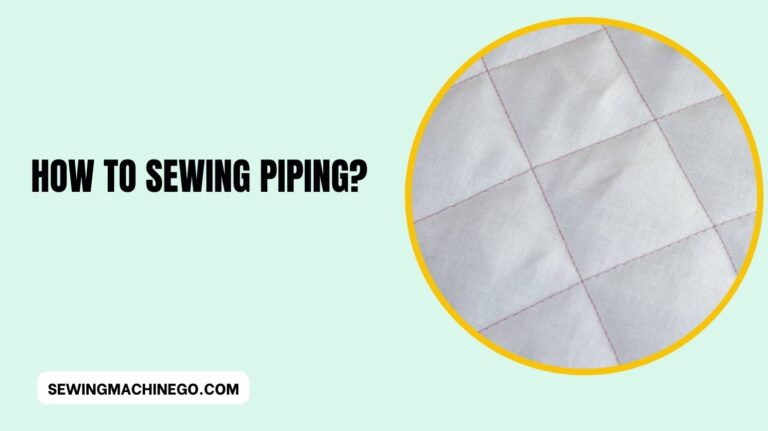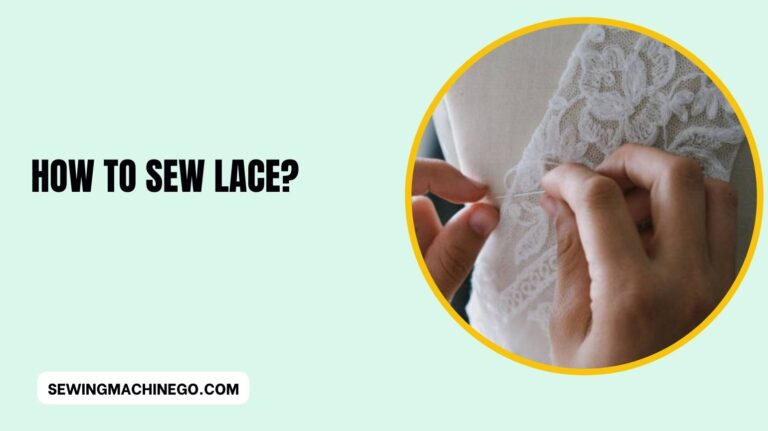How to Make a Shirt Smaller without Sewing? (Ultimate Guide)
How to Make a Shirt Smaller without Sewing? We’ve all been there – you find the perfect shirt, but it’s just a tad too big.
While heading to the tailor is an option, there are simple and effective ways to make a shirt smaller without sewing.
In this guide, we’ll explore five methods that require no sewing skills. Whether you’re trying to revamp an old favorite or adjusting a thrift store find, these techniques are your answer. Let’s dive in!

How to Make a Shirt Smaller without Sewing?
To make a shirt smaller without sewing, you can try using safety pins or fabric tape to temporarily adjust the fit.
Another method is to tie knots in the excess fabric at the back, sides, or sleeves to create a more fitted look.
Keep in mind that these are temporary solutions and may not provide a perfect fit, but they can work in a pinch.
Materials Needed
Before you dive into the various methods for making a shirt smaller without sewing, it’s important to gather the necessary materials. The good news is that for most of these methods, you won’t need an extensive list of supplies.
Here are the basic materials you’ll need:
- Shirt to Be Adjusted: The primary item, of course, is the shirt you want to make smaller. Make sure it’s clean and in good condition, as you don’t want to damage a favorite piece of clothing.
- Elastic Bands: Elastic bands come in handy for the Elastic Band Method. Make sure to have a few on hand. They shouldn’t be too tight to avoid discomfort.
- Belt: The Belt Trick requires a belt that complements your outfit. Choose a belt that works well with the shirt you plan to adjust.
- Safety Pins: If you opt for the Safety Pin Solution, you’ll need safety pins to secure the pleats and create a more fitted appearance. Make sure you have various sizes on hand for different fabrics and adjustments.
- Iron (Optional): While not necessary, iron can help you achieve a more polished look by removing wrinkles and creases. It’s especially useful if you’re adjusting a dress shirt for a formal occasion.
With these basic materials at your disposal, you’ll be well-prepared to use the methods provided in this guide to make your shirt smaller without sewing.
Each method has its unique requirements, but the items on this list should cover most of your needs.
Method 1: The Fold and Tuck Technique
Step 1: Lay Out the Shirt
Start by laying the shirt flat on a clean, even surface.
Step 2: Fold the Shirt
Fold the sides of the shirt towards the center, ensuring the folded portion aligns with the seam. This step creates a pleat on each side.
Step 3: Tuck and Adjust
Tuck the excess fabric under the pleats, creating a slimmer fit. Adjust until you achieve your desired fit.
Method 2: The Elastic Band Method
Step 1: Gather Your Materials
You’ll need your shirt and a few elastic bands. Make sure the bands are not too tight, as you want to avoid discomfort.
Step 2: Insert the Elastic Band
Fold the excess fabric on the sides towards the back. Secure it with the elastic band. Repeat this step until you achieve the desired fit.
Step 3: Adjust and Hide
Adjust the shirt to ensure it fits comfortably. You can tuck the fabric into your pants to hide the excess material.
Method 3: The Safety Pin Solution
Step 1: Prepare Your Shirt
Put on the shirt and pinch the excess fabric on the sides, creating pleats. Make sure you have a mirror to see the fit as you go.
Step 2: Pin and Adjust
Use safety pins to secure the pleats in place. Adjust the fit as necessary, and you’re ready to go.
Method 4: The Knotting Technique
Step 1: Prepare the Shirt
- Start by putting on the shirt that you want to make smaller. Ensure that it’s buttoned up.
- Pinch the fabric on both sides of the shirt where you want to create a more fitted appearance. This is typically done at the waist to give the shirt a tailored look.
- Be sure to use a mirror to assess the fit as you go. This will help you make adjustments more accurately.
Step 2: Tie Knots
- With the excess fabric you’ve pinched on both sides, begin creating small knots. The number of knots you tie depends on how much you want to cinch the shirt. The more knots, the tighter the fit.
- Tie the knots securely but not too tight. You want to achieve a snug fit without making it uncomfortable to wear.
- Once the knots are in place, adjust the fit as needed. You can move the knots closer together or farther apart to get the fit just right.
The Knotting Technique is a simple and effective way to make your shirt smaller without sewing. It provides a customized fit, and you have the flexibility to adjust it to your comfort level.
This method is particularly useful for achieving a more tailored look with casual shirts and blouses. Enjoy the freedom to experiment with your wardrobe, knowing you can always revert to the original fit when desired.
Method 5: The Belt Trick
Step 1: Gather Your Supplies
To get started with the Belt Trick, you’ll need the shirt you want to make smaller and a belt that complements your outfit.
This method is an excellent choice for those casual shirts and blouses that you want to cinch at the waist, giving them a more tailored appearance.
Step 2: Wrap the Belt
- Put on the shirt you wish to adjust.
- After putting on the shirt, take your chosen belt and wrap it around your waist over the shirt.
- Ensure that the belt is positioned at the narrowest part of your torso, which is typically just above your hips.
- Cinch the belt snugly, but not too tight, as you want to maintain comfort while achieving the desired fit.
- Adjust the positioning of the belt and any fabric bunching to create a flattering silhouette.
- Ensure the shirt fits well in the shoulders and chest for a more polished look.
- Always make sure you’re comfortable in your adjusted shirt.
- Iron the shirt if you prefer a neat appearance.
Maintenance and Care
After successfully making your shirt smaller without sewing, it’s important to ensure that your adjustments are maintained and that the shirt remains in good condition.
Here are some tips for proper maintenance and care:
- Regular Inspections: Periodically check your shirt for any signs of wear and tear, such as stretched fabric, loose threads, or damage caused by the adjustments you’ve made.
- Careful Washing: When washing your adjusted shirt, always follow the care instructions on the label. Using a gentle cycle and cold water can help preserve the fabric and the adjustments you’ve made. Consider using a laundry bag to protect the shirt.
- Avoid Harsh Chemicals: Steer clear of harsh detergents, bleach, or fabric softeners that can weaken the fabric and compromise the fit of your shirt. Opt for mild, fabric-friendly detergents.
- Air Dry: Whenever possible, air-dry your shirt by hanging it on a hanger or laying it flat. Avoid using high heat in the dryer, as this can cause the fabric to stretch or warp.
- Re-adjust as Needed: Over time, the knots, pleats, or other adjustments may become loose. Regularly inspect and re-adjust your shirt to maintain the desired fit.
- Store Properly: Store your shirt in a way that minimizes creasing and wrinkling. Using padded hangers or folding them neatly can help maintain the adjustments and the overall appearance.
- Iron with Care: If you need to iron your shirt, do so at a low temperature and with a cloth or towel between the iron and the fabric. Ironing can help smooth out any creases that may occur during washing.
- Avoid Excessive Stretching: Be mindful of sudden movements or actions that might cause excessive stretching or stress on the fabric. Quick, forceful movements can lead to premature wear and tear.
Why Make a Shirt Smaller Without Sewing?
Before we get into the methods, it’s essential to understand the advantages of making a shirt smaller without sewing. Firstly, it’s cost-effective.
No need to spend money on a tailor or sewing equipment. Secondly, it’s a quick fix, perfect for those last-minute outfit adjustments. Lastly, it allows you to experiment with different styles without the fear of ruining your clothing.
People also ask
How do you make a shirt that’s too big to fit?
To make a shirt that’s too big fit better, you can use techniques like folding and tucking, knotting, using an elastic band, or a belt to cinch it at the waist.
These methods allow you to adjust the fit without sewing and create a more tailored appearance.
How do you cinch a shirt without sewing?
To cinch a shirt without sewing, you can use simple methods like folding and tucking, knotting the fabric, and using an elastic band, or a belt to create a more fitted and stylish look.
These techniques make the shirt smaller without the need for any sewing skills.
How do you make an oversized shirt fit without cutting it?
To make an oversized shirt fit without cutting it, you can use techniques like folding and tucking,
knotting, using an elastic band, or a belt to cinch the fabric at strategic points, usually at the waist. These methods adjust the fit without the need for cutting or sewing.
How can I reduce my shirt size?
To reduce your shirt size, you can employ non-sewing methods like folding and tucking, knotting, using an elastic band,
or a belt to cinch the fabric at the waist or other strategic areas. These techniques allow you to make your shirt smaller without permanently altering it.
Conclusion
In conclusion, altering the size of a shirt without sewing is an achievable task with the right methods and techniques.
By following the steps outlined in this guide, you can effectively make a shirt smaller without the need for a needle and thread.
Whether it’s through strategic folding, knotting, or using other creative adjustments, you can adapt your shirt to fit your desired size and style.
Remember to exercise caution when implementing these methods and to consider the fabric type and the specific shirt design to ensure the best results.
With a bit of patience and experimentation, you can enjoy a perfectly fitting shirt without the hassle of sewing.

Hi, I am Alice, and I am your perfect guide to the world of sewing machines. With over 10 years of experience in the sewing industry, I am passionate about sharing my knowledge and expertise to help you make the most of your sewing journey. about me






